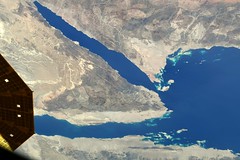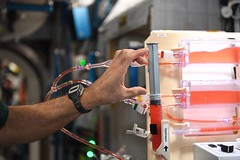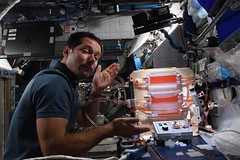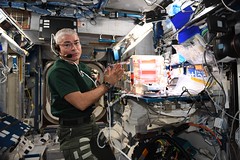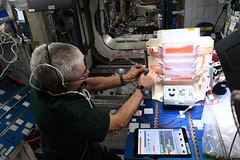Red Sea
jeudi 1 juillet 2021 à 11:18Thomas Pesquet posted a photo:
✌ J’ai toujours trouvé que la mer rouge ressemblait à cet émoji quand on la survole, qu’en dites-vous ? ✌ Une dernière photo de la Terre sur laquelle on voit encore le Cygnus. J’en ai parlé plusieurs fois, mais maintenant qu’il est parti il nous manque déjà (enfin, surtout l’espace supplémentaire qu’il nous donnait !) Son remplaçant arrive dans la nuit de jeudi à vendredi, c’est un cargo de ravitaillement Progress, et on attend aussi pour plus tard un tout nouveau vaisseau : le Starliner de Boeing :)
✌ I always think the Red Sea looks like this emoji when we fly over it ✌ A leftover picture with the Cygnus solar wings photobombing it. I mention it often but in reality we already miss Cygnus, the solar arrays shine brightly and beautifully, and the extra space was nice too. We won't have to wait long at all before a new arrival, a Progress supply craft is set to arrive in the night of Thursday, and we are also expecting a whole new spacecraft a bit later, the Boeing Starliner!
Credits: ESA/NASA–T. Pesquet
608C9319
